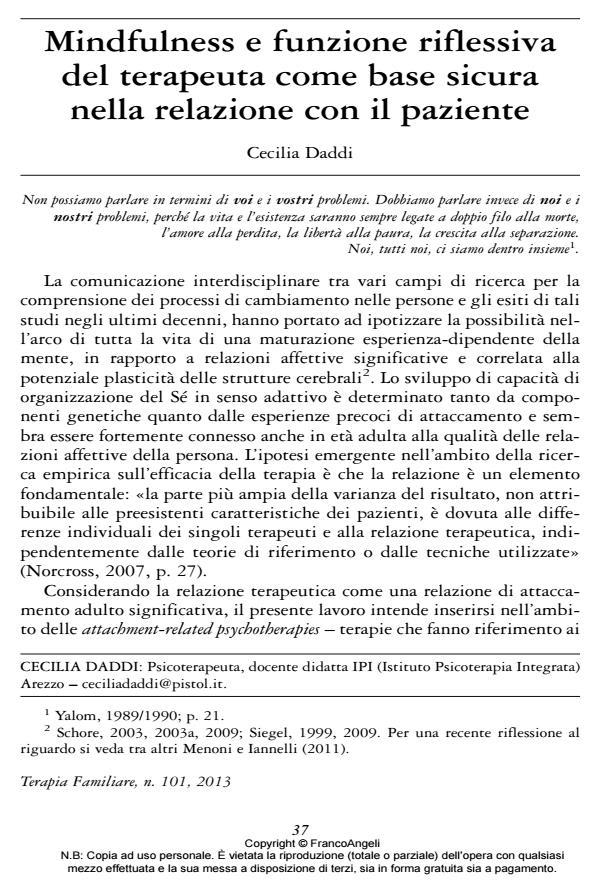Mindfulness e funzione riflessiva del terapeuta come base sicura nella relazione con il paziente
Journal title TERAPIA FAMILIARE
Author/s Cecilia Daddi
Publishing Year 2013 Issue 2013/101
Language Italian Pages 30 P. 37-66 File size 163 KB
DOI 10.3280/TF2013-101003
DOI is like a bar code for intellectual property: to have more infomation
click here
Below, you can see the article first page
If you want to buy this article in PDF format, you can do it, following the instructions to buy download credits

FrancoAngeli is member of Publishers International Linking Association, Inc (PILA), a not-for-profit association which run the CrossRef service enabling links to and from online scholarly content.
The paper deals with an integrative perspective of knowledges from attachmentrelated psychotherapies and affective balance therapies. The basic hypothesis is that safety in the therapeutic relationship is predictive of its efficacy. The achievement of relational goals of closeness and support for perception about safety in the patient is connected to processes of acceptance and empathic capacities in the therapist. The author argues that the development of these processes is made possible by the elaboration of any defensive automatisms and integration of emotional states of the therapist in the matching between his own emotional strategies and those of the patient. The safe base in the relationship can be achieved by the practice of mindfulness and the ability of reflective function of the therapist, exerted on any state of mindlessness (disconnection).
Keywords: Mindfulness; reflective function; emotional regulation; attachment; safe base
Cecilia Daddi, Mindfulness e funzione riflessiva del terapeuta come base sicura nella relazione con il paziente in "TERAPIA FAMILIARE" 101/2013, pp 37-66, DOI: 10.3280/TF2013-101003